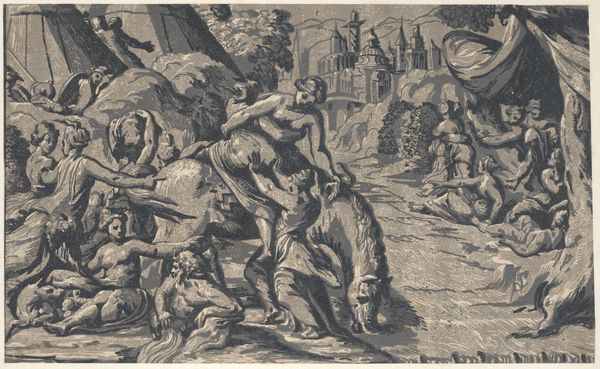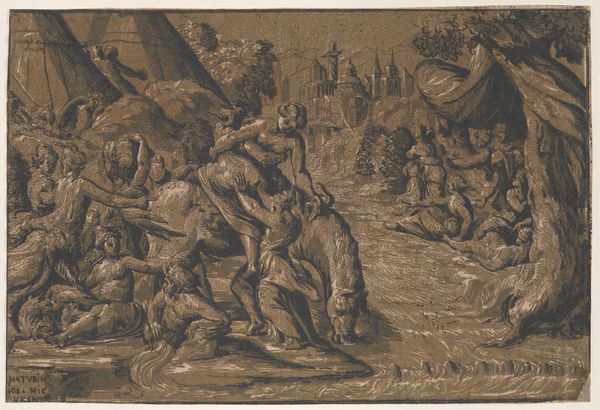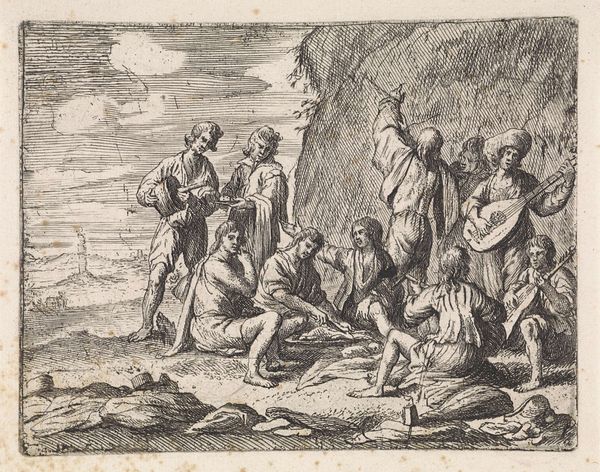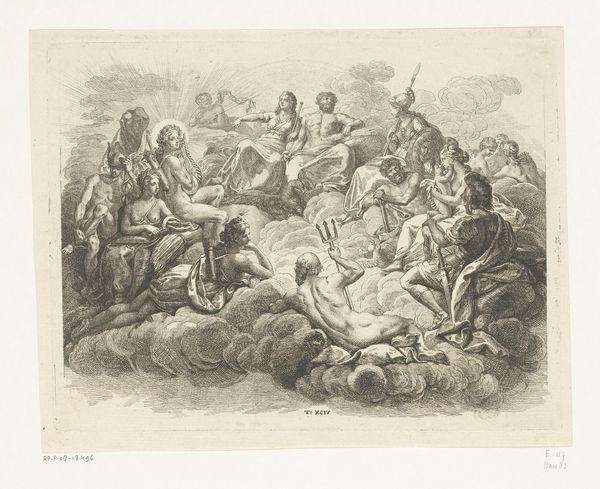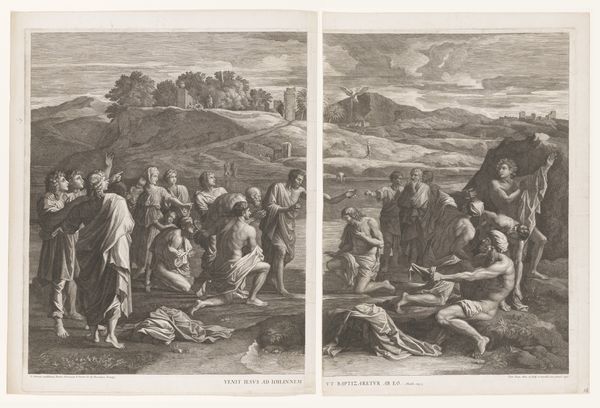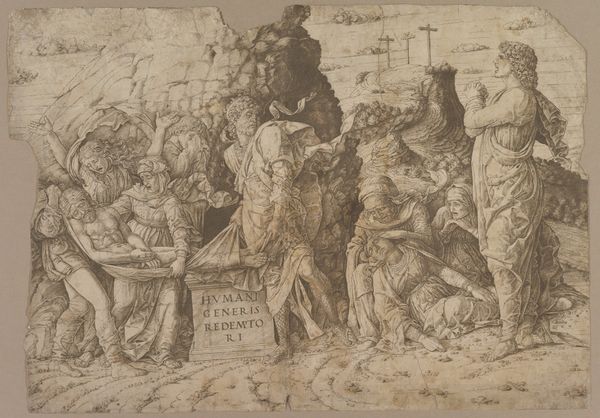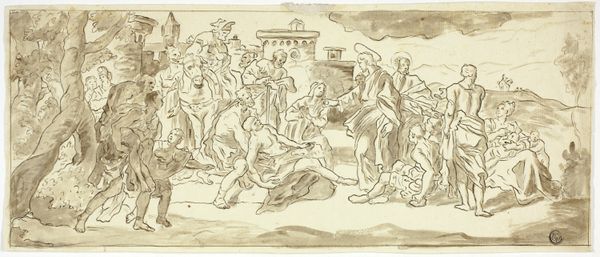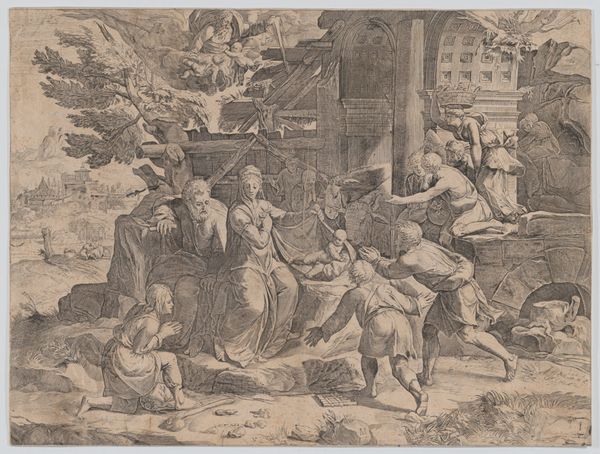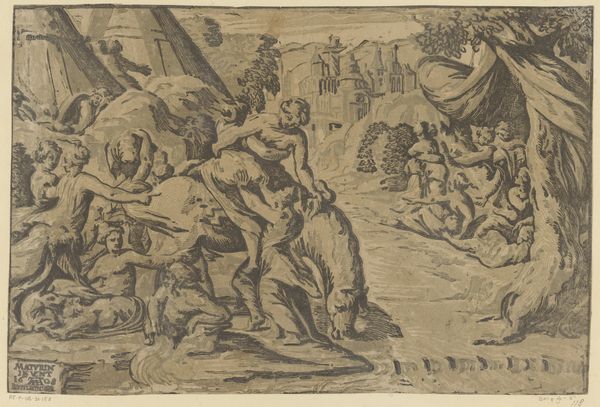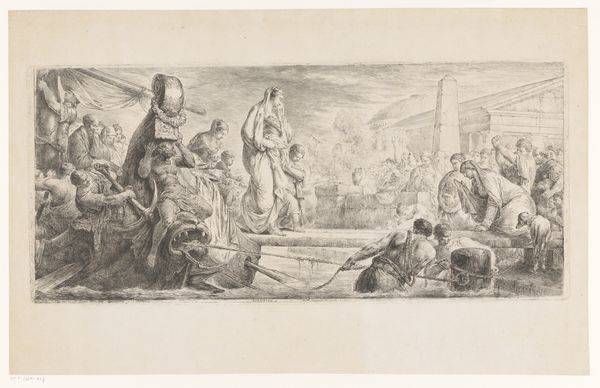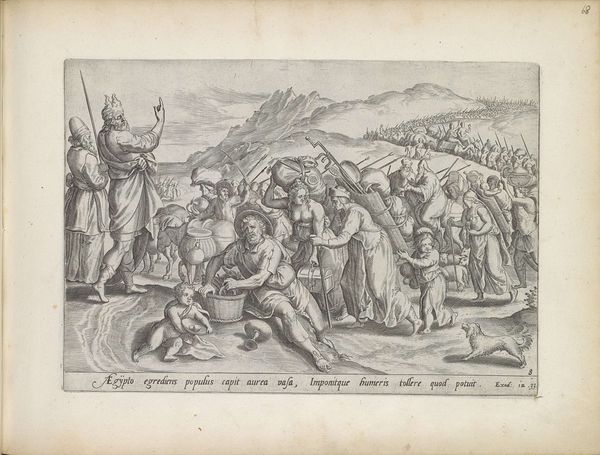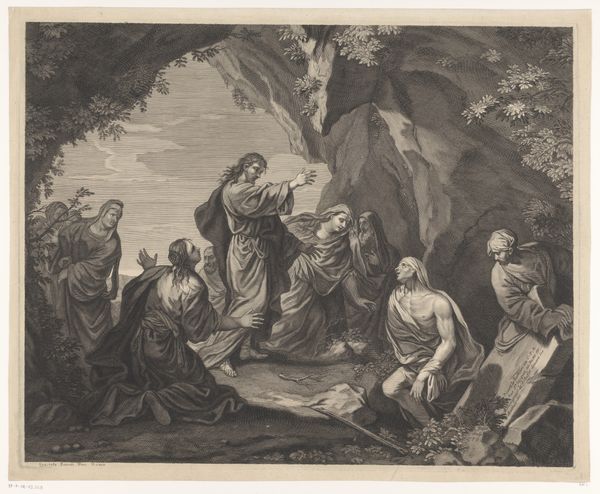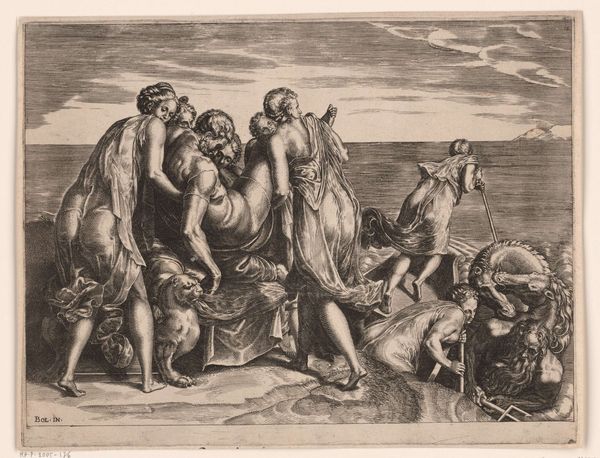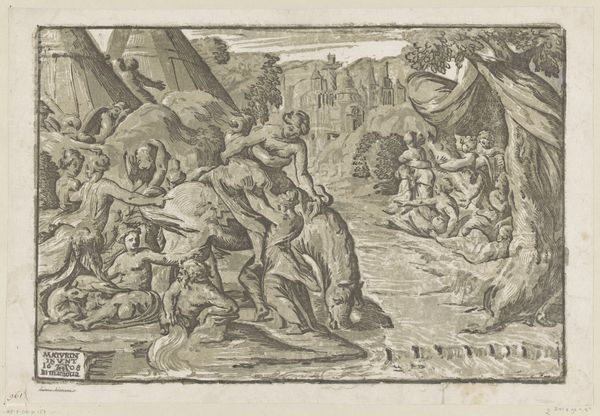
Landscape with Group of Trees Surrounded by Water, Cottage at Left, Woman Seated Right Foreground 1802 - 1806
0:00
0:00
drawing, print, engraving
#
drawing
# print
#
history-painting
#
academic-art
#
engraving
Dimensions: sheet: 9 1/4 x 13 in. (23.5 x 33 cm)
Copyright: Public Domain
Curator: Here we have "Landscape with Group of Trees Surrounded by Water, Cottage at Left, Woman Seated Right Foreground," created between 1802 and 1806 by Richard Cooper II. It’s an engraving. Editor: What a busy scene! It's almost overwhelming, isn't it? The eye jumps all over trying to find a point of focus. I notice the strong diagonal created by the figures and the swirling lines in the “sky”. Curator: Indeed. The artist's decision to use engraving allows for incredibly fine detail. Look closely, and you'll notice the intricate layering of lines to create the tonal variations. The tools used in creating this, like burins and scrapers, demanded expert handling; a master printer's contribution would have also impacted its outcome and sale. Editor: The subject matter seems very theatrical, almost operatic. Is it religious, maybe, given the poses? The whole design is balanced very precariously, almost a vortex. It's dynamic, in any event, as one moves back and forth throughout the narrative presented. Curator: It is categorized under history painting, indicating that there are strong connections to academic art styles prevalent during that era. The themes likely reflect prevalent societal narratives and would appeal to certain patronage networks. Think about where the artist studied, exhibited and perhaps who they were hoping to reach. Editor: The whole thing reads almost as a cloud. Considering the monochrome palette of the print, the subtle textures add such a tremendous impact; it all really draws attention. Curator: Absolutely. From a materialist perspective, the use of engraving as a printmaking process was key, permitting replication. This increased accessibility to artwork, potentially spreading political, historical, or societal ideas faster than if solely reliant on paintings that required studio work to create, in isolation. Editor: Well, studying it further, I now appreciate how much rhythm exists despite that initial impression. The repetition of form certainly has a binding quality. Curator: Yes, thinking about it now in these broader art historical terms makes me see aspects that I had previously glanced over, making the art even more valuable to be examined.
Comments
No comments
Be the first to comment and join the conversation on the ultimate creative platform.
